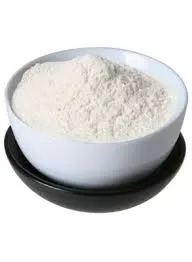
Pro . 13, 2024 04:35 Back to list
hydroxyethyl cellulose cas number
Understanding Hydroxyethyl Cellulose Properties, Applications, and Significance
Hydroxyethyl cellulose (HEC), a non-ionic water-soluble polymer derived from cellulose, has become a significant compound in various industries due to its unique properties and versatility. This polymer, commonly identified by its CAS number 9004-62-0, is utilized extensively in formulations ranging from pharmaceuticals to cosmetics and construction materials.
Chemical Structure and Properties
Hydroxyethyl cellulose is synthesized by the etherification of cellulose, where ethylene oxide reacts with cellulose molecules. This process results in the introduction of hydroxyethyl groups, which enhance the solubility of cellulose in water. The resulting compound exhibits several favorable characteristics
1. Good Solubility HEC is readily soluble in water, forming viscous solutions, which is crucial in its application in various formulations. 2. Thickening and Gelling Agent Due to its ability to modify viscosity, HEC serves as an effective thickener and stabilizer in many products. It can create gels and emulsions, making it indispensable in formulations requiring texture and stability.
3. Thermal Stability HEC is stable across a range of temperatures, allowing it to maintain its properties during processing and storage.
.
4. pH Stability The polymer remains effective across a broad pH range, making it suitable for diverse applications without the concern of degradation.
Applications of Hydroxyethyl Cellulose
hydroxyethyl cellulose cas number

1. Pharmaceutical Industry HEC is widely used in pharmaceutical formulations, including topical creams, gels, and ointments. Its ability to enhance the viscosity of solutions makes it an excellent agent for suspending active ingredients, ensuring uniform distribution and stability of the formulations. Additionally, HEC acts as a protective colloid, facilitating drug delivery and improving the bioavailability of certain compounds.
2. Cosmetics and Personal Care In the cosmetics sector, HEC is a popular ingredient in products such as shampoos, conditioners, lotions, and creams. It provides a smooth texture, enhances the spreadability, and contributes to the thickness of formulations. Moreover, HEC helps in moisture retention, making it ideal for hydrating products aimed at improving skin feel.
3. Construction and Building Materials The construction industry also benefits from HEC's unique properties. It is used in manufacturing cement, adhesives, and sealants, where it enhances workability, extends open time, and improves adhesion. HEC's water retention properties are essential in preventing the quick drying of materials, thus promoting better bonding and durability.
4. Food Industry Hydroxyethyl cellulose finds applications in the food sector as a food additive. It is often used as a thickener, stabilizer, and emulsifier to improve the texture and shelf-life of various products.
Environmental Impact and Safety
HEC is regarded as safe for use in various applications. It is non-toxic, biodegradable, and derived from natural sources, making it an environmentally friendly choice compared to synthetic polymers. Regulatory agencies classify it as safe for use in food, pharmaceuticals, and cosmetics, provided that it meets the necessary purity standards.
Conclusion
In conclusion, hydroxyethyl cellulose is a versatile polymer with a myriad of applications across multiple industries. Its unique properties—such as water solubility, thickening ability, and stability—make it an invaluable ingredient in pharmaceuticals, cosmetics, construction, and food products. As industries continue to seek sustainable and effective materials, HEC stands out as a safe and efficient choice, reflecting the potential for innovation in formulation development. Whether enhancing the performance of a cosmetic product or ensuring the consistency of a pharmaceutical formulation, HEC proves its significance in modern applications, paving the way for future advancements. Its prominence in diverse sectors underscores the importance of continuing research and development to unlock further potential uses of this remarkable compound.
-
Versatile Hpmc Uses in Different Industries
NewsJun.19,2025
-
Redispersible Powder's Role in Enhancing Durability of Construction Products
NewsJun.19,2025
-
Hydroxyethyl Cellulose Applications Driving Green Industrial Processes
NewsJun.19,2025
-
Exploring Different Redispersible Polymer Powder
NewsJun.19,2025
-
Choosing the Right Mortar Bonding Agent
NewsJun.19,2025
-
Applications and Significance of China Hpmc in Modern Industries
NewsJun.19,2025







